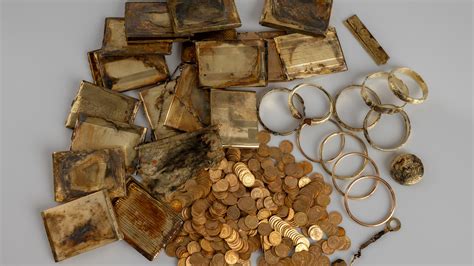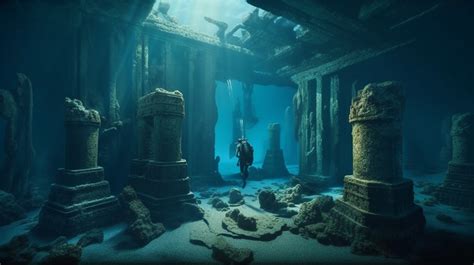
Hikers in California’s Sierra Nevada mountains unearthed a cache of gold coins, potentially worth a fortune, sparking speculation of a modern-day gold rush. The find, discovered along a well-traveled trail in Stanislaus National Forest, is shrouded in mystery, with the exact location and value remaining undisclosed to protect the site from treasure hunters.
Two hikers stumbled upon the hidden treasure while navigating a familiar route in the Stanislaus National Forest, according to reports. The nature and scale of the gold coin discovery has ignited imaginations, reminding many of California’s historic gold rush era. While the precise number of coins and their individual worth have not been publicly revealed, experts speculate the stash could fetch a significant sum. “We get a lot of questions about gold and things like that. But something of that magnitude, that’s pretty unique,” said Zach Behrens, a spokesperson for the Stanislaus National Forest.
The discovery was promptly reported to authorities, who have since secured the area and are conducting further investigations. Federal law dictates that found treasures on public lands must be properly documented and potentially claimed by the U.S. government. The coins are currently under review to determine their historical significance and origin, which could shed light on why they were buried in the first place.
The mysterious nature of the find has fueled numerous theories about its origins. Some speculate the coins were stashed away by a stagecoach robber, while others believe they may have been hidden by miners during the original gold rush era. Another theory suggests the coins were deliberately buried as a time capsule of sorts. Regardless of their origin, the discovery serves as a captivating reminder of California’s golden past.
The incident has also raised concerns about the potential for a surge of treasure hunters descending upon the national forest. Authorities are urging the public to respect the area and refrain from disturbing the site, emphasizing that the removal of any artifacts from public lands is illegal. Law enforcement agencies are monitoring the area to prevent unauthorized digging and ensure the preservation of the natural environment.
The discovery has generated considerable interest among numismatists and historians alike. Experts are eager to examine the coins and learn more about their age, mint marks, and potential historical value. The find could provide valuable insights into the economic and social history of California during the 19th and early 20th centuries. Depending on the rarity and condition of the coins, they could be worth significantly more than their face value.
While the long-term fate of the coins remains uncertain, the discovery has undoubtedly captured the public’s imagination. It serves as a testament to the enduring allure of gold and the possibility of uncovering hidden treasures in unexpected places. The story of the hikers’ discovery is a modern-day adventure that echoes the tales of fortune seekers who flocked to California during the gold rush.
The find also highlights the importance of responsible stewardship of public lands. The discovery underscores the need to balance public access with the preservation of natural and historical resources. Authorities are working to ensure that the site is protected from damage and that the coins are properly managed for the benefit of future generations.
Detailed Analysis and Background
The rediscovery of gold in the Sierra Nevada evokes a powerful connection to California’s formative years. The original Gold Rush, which began in 1848 with the discovery of gold at Sutter’s Mill, transformed the state and the nation. It triggered a massive influx of immigrants, spurred economic growth, and led to California’s rapid statehood in 1850. The stories of hardship, perseverance, and the pursuit of instant wealth during that era continue to fascinate and inspire.
The recent discovery serves as a tangible link to that history. While the scale of this find is nowhere near the magnitude of the original Gold Rush, it nonetheless captures the spirit of adventure and the allure of the unknown. The fact that the coins were found in a national forest, a protected area open to the public, adds another layer of intrigue to the story.
The Stanislaus National Forest, where the coins were discovered, is a vast and diverse landscape encompassing over 898,000 acres. It is home to a wide range of plant and animal species, as well as numerous historical and cultural sites. The forest is a popular destination for hiking, camping, fishing, and other recreational activities. The discovery of the gold coins highlights the hidden treasures that may still lie within these public lands.
The legal framework surrounding found treasures on public lands is complex. Under U.S. law, any artifacts discovered on federal property are considered government property. The discoverers have a responsibility to report the find to the authorities, who will then determine the appropriate course of action. In some cases, the discoverers may be entitled to a reward or a share of the value of the treasure. However, the ultimate decision rests with the government.
The investigation into the origin of the coins is likely to involve a variety of experts, including historians, numismatists, and archaeologists. They will examine the coins for clues about their age, mint marks, and potential historical significance. They will also research historical records to determine whether there are any accounts of lost or hidden treasure in the area.
The potential value of the coins will depend on several factors, including their age, rarity, condition, and historical significance. Some gold coins are worth only their weight in gold, while others can fetch tens of thousands of dollars or more. Coins that are in pristine condition and have a low mintage number are typically the most valuable.
The discovery of the gold coins has also raised ethical questions about the role of treasure hunting on public lands. While some people view treasure hunting as a harmless hobby, others argue that it can damage sensitive historical and archaeological sites. The use of metal detectors and other equipment can disturb the soil and potentially destroy artifacts.
Authorities are urging the public to respect the area where the coins were discovered and to refrain from disturbing the site. They are also reminding people that the removal of any artifacts from public lands is illegal and can result in fines or even imprisonment. The goal is to protect the site from damage and to ensure that the coins are properly managed for the benefit of future generations.
The story of the gold coin discovery is a reminder that history is not just something that happened in the past; it is something that continues to shape our present. The coins are a tangible link to the past, and their discovery provides an opportunity to learn more about the history of California and the Gold Rush era.
The long-term fate of the coins remains uncertain. They could be placed in a museum, sold at auction, or used for educational purposes. Ultimately, the decision will rest with the government, which will consider a variety of factors, including the historical significance of the coins and the public interest.
Regardless of their ultimate fate, the discovery of the gold coins has captured the imagination of people around the world. It is a story of adventure, mystery, and the enduring allure of gold. It is a story that reminds us that there are still hidden treasures to be found in the world, and that even in the 21st century, the spirit of the Gold Rush lives on.
The Stanislaus National Forest is no stranger to historical events and remnants of the Gold Rush era. Numerous mining camps and settlements once thrived within its boundaries, leaving behind traces of their existence in the form of abandoned buildings, mining equipment, and other artifacts. These sites are a valuable resource for understanding the history of the region and the lives of the people who lived and worked there.
The discovery of the gold coins serves as a reminder of the importance of preserving these historical sites. These sites are fragile and vulnerable to damage from natural causes and human activity. It is essential that they be protected from vandalism, looting, and other forms of degradation.
The Forest Service and other agencies are working to protect these historical sites through a variety of measures, including archaeological surveys, site stabilization, and public education. They are also working to engage the public in the preservation of these sites, encouraging them to report any signs of damage or disturbance.
The discovery of the gold coins has also highlighted the importance of responsible recreation on public lands. Visitors to the Stanislaus National Forest and other public lands should be aware of the potential impact of their activities on the environment and historical sites. They should take steps to minimize their impact, such as staying on designated trails, packing out all trash, and avoiding disturbing vegetation or artifacts.
The story of the gold coin discovery is a testament to the power of the human imagination. It is a story that has captured the attention of people around the world and has inspired them to dream of finding their own hidden treasures. It is a story that reminds us that even in the modern world, there is still room for adventure and discovery.
“Something of that magnitude, that’s pretty unique,” adds Behrens, highlighting the rarity of such a find. The Stanislaus National Forest has been involved in preserving various smaller finds, but nothing of this scale has been encountered recently. The incident also raises questions about property rights and the legal processes governing found items on public lands.
The discovery has prompted discussions among historians and archaeologists regarding the potential implications for understanding the region’s past. If the coins can be traced to a specific historical event or individual, they could provide valuable insights into the lives and experiences of people who lived in the Sierra Nevada during the Gold Rush era and beyond.
The incident also underscores the importance of responsible behavior in natural areas. The delicate ecosystem of the Stanislaus National Forest is susceptible to damage from human activity, and it is crucial that visitors take steps to minimize their impact on the environment. This includes avoiding disturbing vegetation, packing out all trash, and respecting wildlife.
The discovery of the gold coins is a reminder that public lands are a valuable resource that should be protected for future generations. These lands provide opportunities for recreation, education, and scientific research. They also play a vital role in protecting biodiversity and preserving cultural heritage.
The legal process of determining the rightful owner of the coins is a complex one that will likely take several months or even years. The government will need to conduct a thorough investigation to determine the origin of the coins and whether there are any legitimate claims to ownership.
In the meantime, the coins will be stored in a secure location to protect them from theft or damage. They will also be examined by experts to determine their age, condition, and historical significance.
The discovery of the gold coins is a reminder that the past is never truly gone. It is always present in the landscape around us, waiting to be rediscovered. It is up to us to learn from the past and to use that knowledge to create a better future.
The find has spurred interest in local history and heritage tourism. The Sierra Nevada region boasts numerous historical sites and museums that offer visitors a glimpse into the past. These attractions provide a valuable opportunity to learn about the history of the Gold Rush and the lives of the people who shaped the region.
The discovery of the coins also highlights the importance of supporting public lands and the agencies that manage them. The Forest Service and other agencies play a vital role in protecting natural and cultural resources, providing recreational opportunities, and ensuring the long-term sustainability of public lands.
The story of the gold coin discovery is a reminder that anything is possible. It is a story that has inspired people to dream of finding their own hidden treasures and to explore the world around them with a sense of wonder and curiosity.
The discovery of the gold coins in Stanislaus National Forest serves as a potent symbol of California’s rich and multifaceted history. It not only connects us to the state’s iconic Gold Rush era but also raises pertinent questions about land stewardship, historical preservation, and the enduring allure of hidden riches. As the investigation unfolds, it is crucial to maintain a balance between public fascination and the imperative to protect the natural and historical integrity of this treasured landscape.
The incident brings to light the delicate balance between the allure of discovery and the need for conservation. While the prospect of unearthing hidden treasures can be enticing, it is important to remember that public lands are not merely playgrounds for personal gain. They are valuable ecosystems and cultural resources that deserve our utmost respect and protection.
The discovery of the gold coins is a reminder that the Gold Rush era was not just a period of prosperity and opportunity. It was also a time of hardship, displacement, and environmental degradation. The pursuit of gold led to the destruction of forests, the pollution of rivers, and the displacement of Native American tribes.
The story of the gold coin discovery is a complex and multifaceted one. It is a story that raises questions about history, law, ethics, and the environment. It is a story that will continue to unfold in the months and years to come. As the story unfolds, it is important to remain objective and unbiased. It is also important to respect the rights of all parties involved, including the discoverers of the coins, the government, and the public.
Frequently Asked Questions (FAQ)
-
Where were the gold coins found? The gold coins were discovered in Stanislaus National Forest, located in California’s Sierra Nevada mountains. The exact location remains undisclosed to protect the site from potential treasure hunters.
-
Who found the gold coins? The coins were discovered by two hikers who were traversing a well-traveled trail within the forest. Their identities have not been publicly released.
-
What is the estimated value of the gold coins? The precise number of coins and their individual worth have not been publicly revealed. However, experts speculate the stash could be worth a significant sum, potentially a fortune, depending on their age, rarity, and condition.
-
What will happen to the gold coins now? The coins are currently under the custody of authorities who are conducting an investigation to determine their origin, historical significance, and legal ownership. Under U.S. law, any artifacts discovered on federal property are considered government property.
-
Is it legal for people to go searching for treasure in Stanislaus National Forest? While recreational activities like hiking are permitted, unauthorized digging or removal of artifacts from public lands is illegal and can result in fines or imprisonment. Authorities are urging the public to respect the area and refrain from disturbing the site. The use of metal detectors may also be restricted or require permits.









